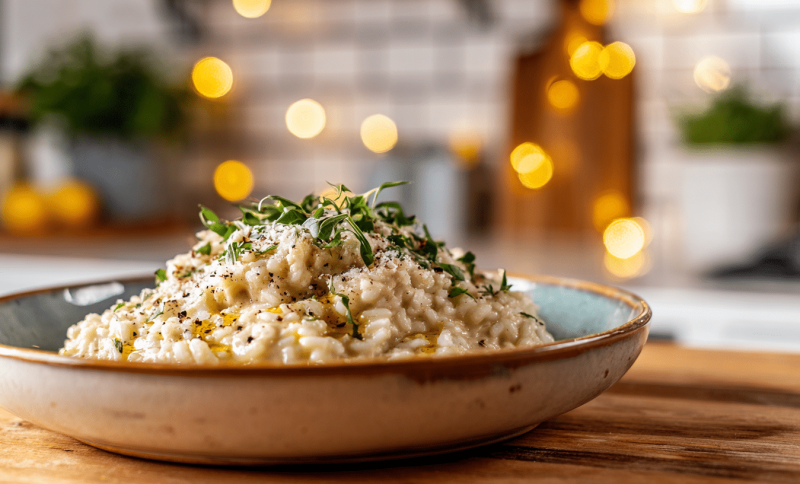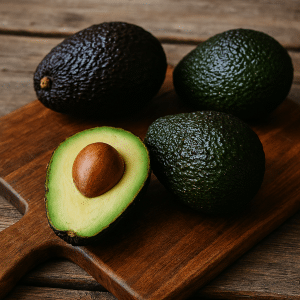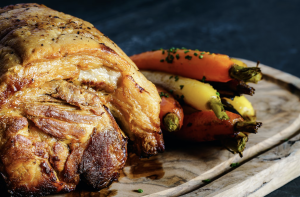When you’re craving a warm, creamy bowl of risotto but need to avoid dairy, dairy-free risotto is the perfect solution.
This comforting Italian dish can easily be made without butter, cream, or cheese while maintaining that signature creamy texture.
Thanks to plant-based ingredients like olive oil, coconut cream, and cashew-based Parmesan, you can enjoy a rich, satisfying meal without compromising on flavor.
The beauty of dairy-free risotto lies in its versatility.
With endless options for vegetables, protein, and flavor additions, it’s easy to create a personalized dish that suits your taste.
If you want to add seasonal veggies, tofu, or a sprinkle of vegan Parmesan, dairy-free risotto can be customized to fit any dietary need. This recipe proves that comfort food doesn’t require dairy to be delicious and satisfying.
What is Dairy-Free Risotto?
Making risotto without dairy isn’t about missing out; it’s about opening up new possibilities. Plant-based ingredients can create the same luxurious texture while adding their unique flavors.
Dairy-free risotto is a variation of the classic Italian risotto made without any dairy products.
While traditional risottos use butter and Parmesan cheese for creaminess and flavor, this version substitutes those ingredients with plant-based alternatives like coconut cream, olive oil, or nutritional yeast.
The result is a creamy, hearty dish that’s perfect for anyone avoiding dairy or following a vegan diet.
Ingredients You’ll NeedFor the Risotto:
|
Recipe Notes & Prep Info
Getting your timing right is essential for perfect risotto. This handy reference keeps you on track from start to finish.
| Information | Details |
|---|---|
| Prep Time | 15 minutes |
| Cook Time | 25 minutes |
| Category | Main Dish |
| Method | Stovetop |
| Cuisine | Italian, Dairy-Free |
| Yield | 4-6 servings |
Fun Fact: Traditional Italian risotto takes about 18 minutes to cook – any longer and you risk overcooking the rice!
Let’s Get Cooking – Step by Step!
Success with risotto comes from understanding the rhythm of cooking. These six steps will guide you through the process with confidence and ease.
Step 1: Prepare Your Base
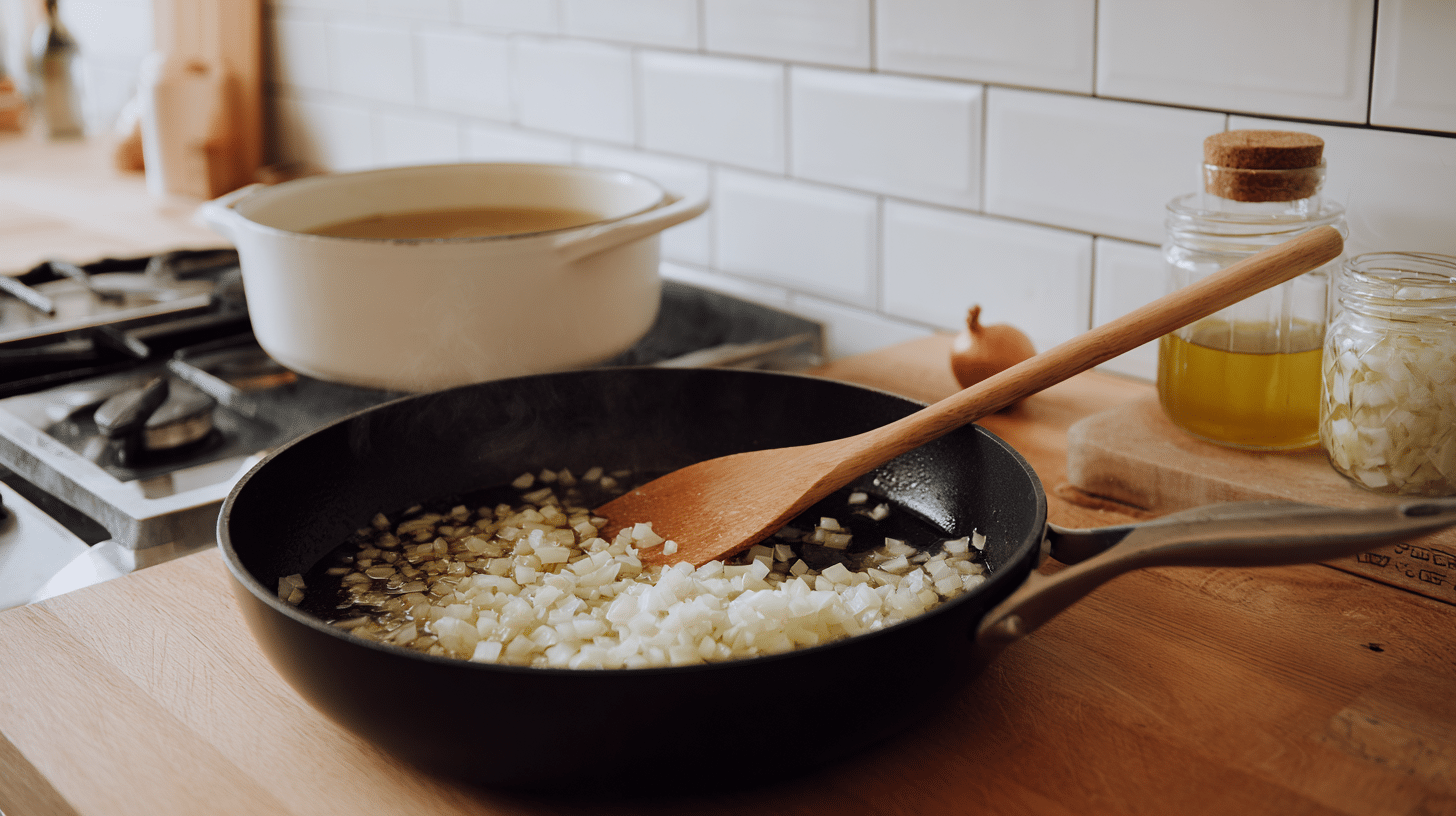
Keep the vegetable broth warm in a separate saucepan over low heat. In a large sauté pan, heat olive oil over medium heat. Add the diced onion and cook for 3-4 minutes until softened.
Stir in the garlic and cook for 1 more minute.
Pro Tip: Warm broth incorporates better than cold broth and prevents the rice from cooling down during cooking.
Step 2: Toast the Rice
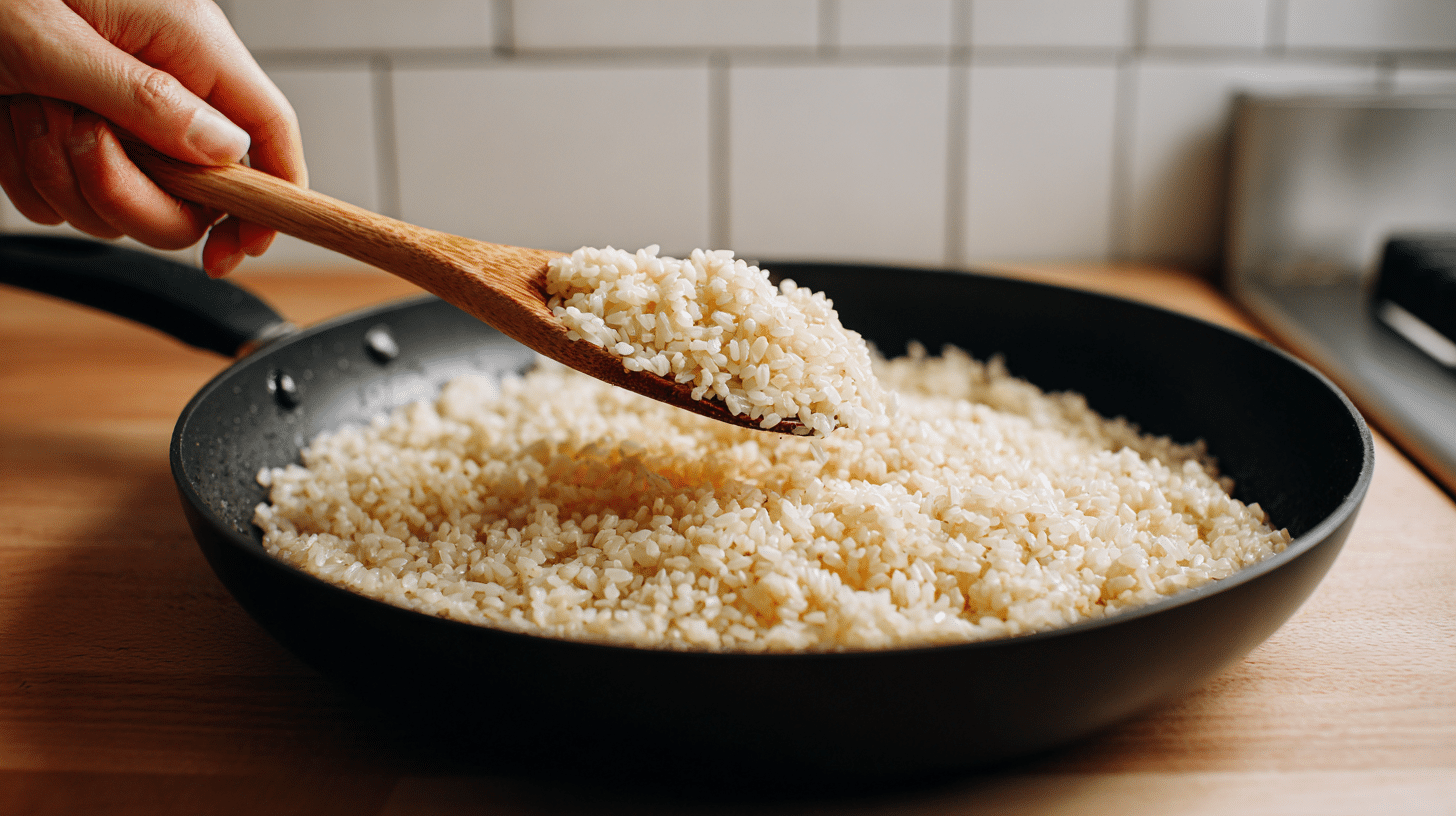
Add the arborio rice to the pan and cook, stirring frequently, for 1–2 minutes until the rice is slightly toasted. The rice should be well-coated with oil and have a light golden color.
If using wine, pour it in now and stir constantly until most has been absorbed.
Pro Tip: Toasting the rice creates a protective barrier that helps maintain the perfect al dente texture.
Step 3: Add Broth Gradually
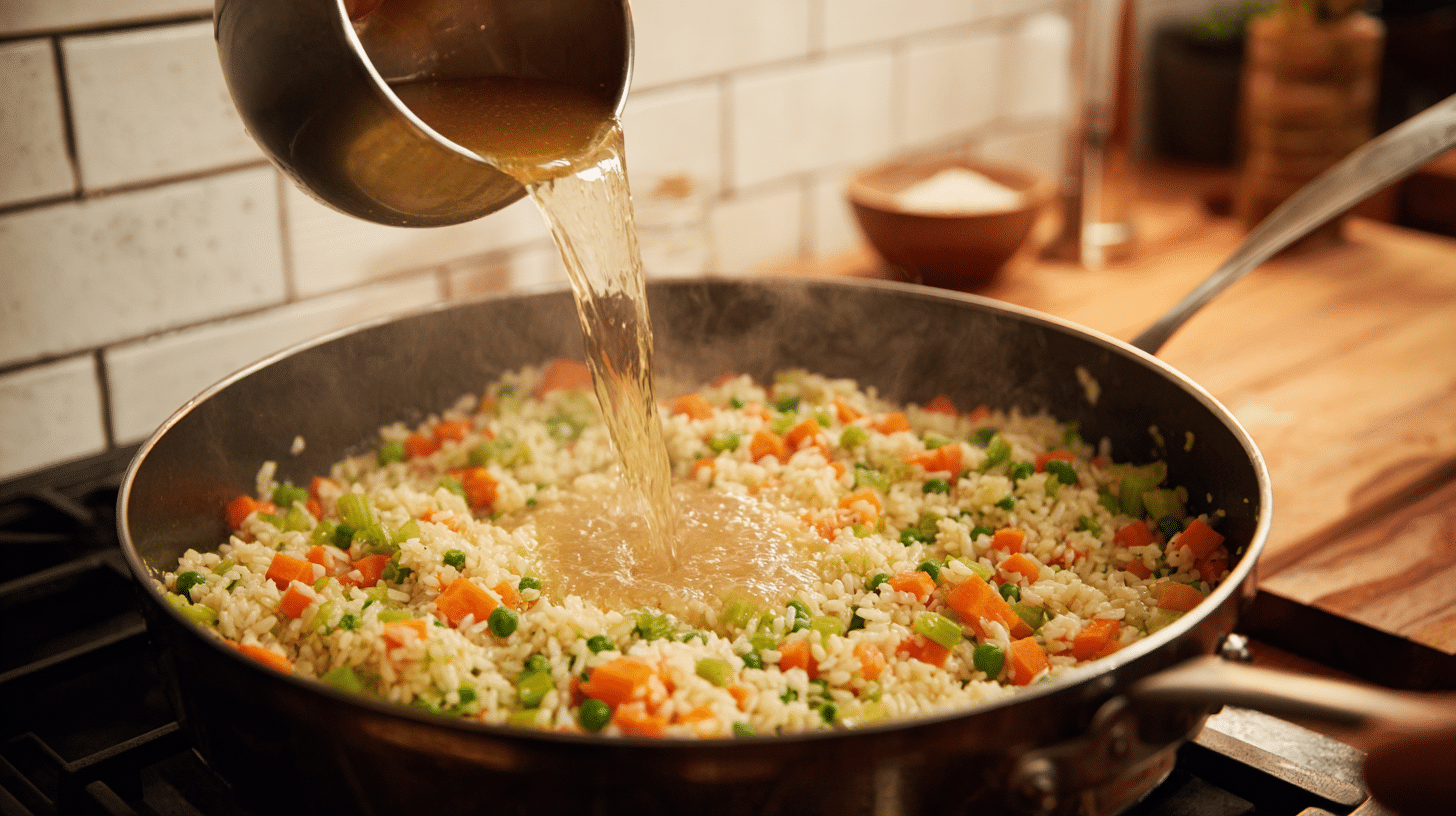
Begin adding the warm vegetable broth one ladle at a time, stirring often. Wait until the liquid has mostly absorbed before adding more broth.
Continue this process for about 15-18 minutes until the rice becomes creamy.
Pro Tip: Patience is key – rushing this step will result in unevenly cooked rice.
Step 4: Add Vegetables
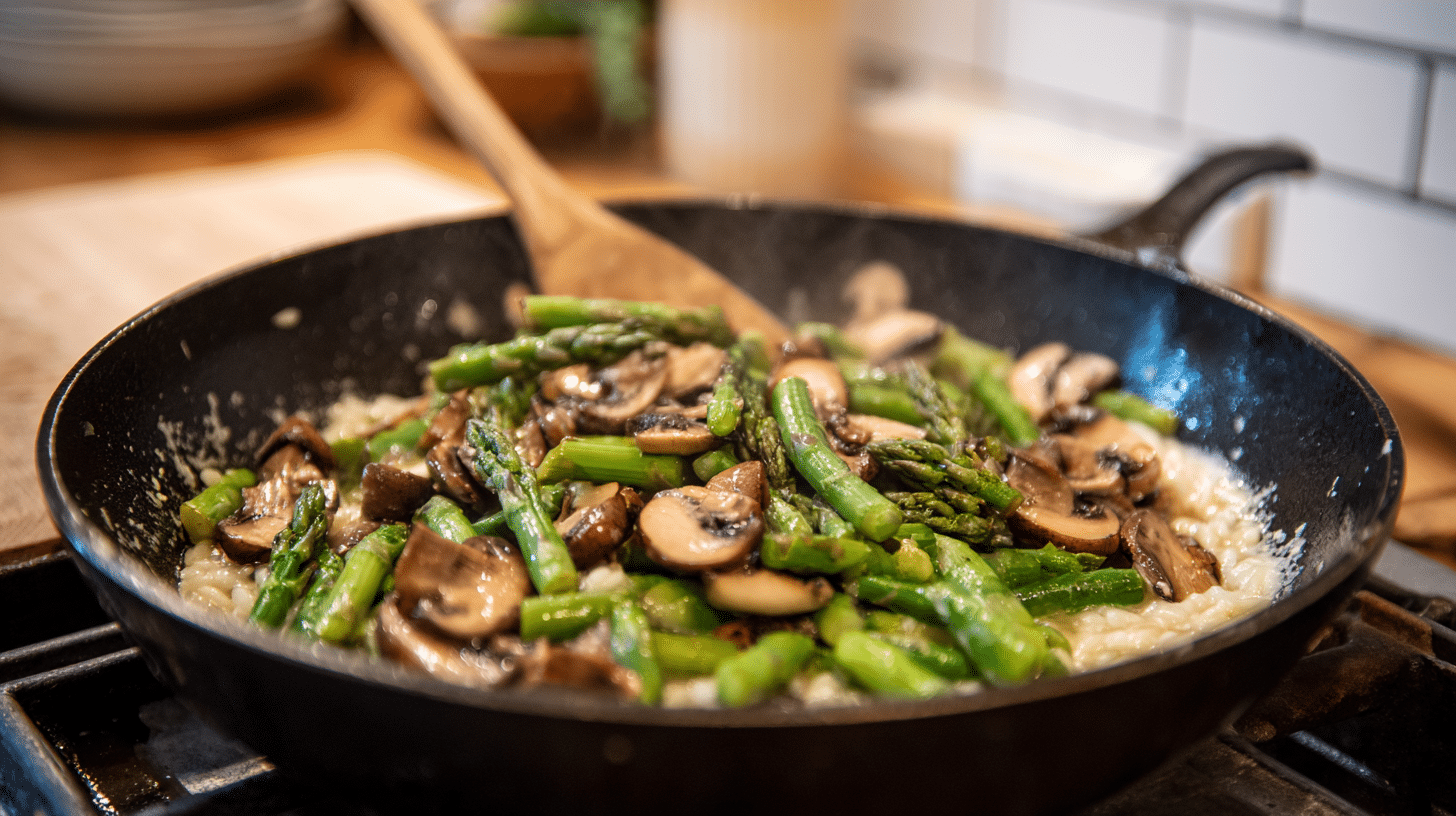
Midway through the broth-adding process, stir in your chosen vegetables. Mushrooms and asparagus need more cooking time, while peas can go in near the end.
Continue adding broth and stirring until rice is tender but still has a slight bite.
Pro Tip: Cut vegetables into uniform sizes so they cook evenly and look professional.
Step 5: Finish with Flavor
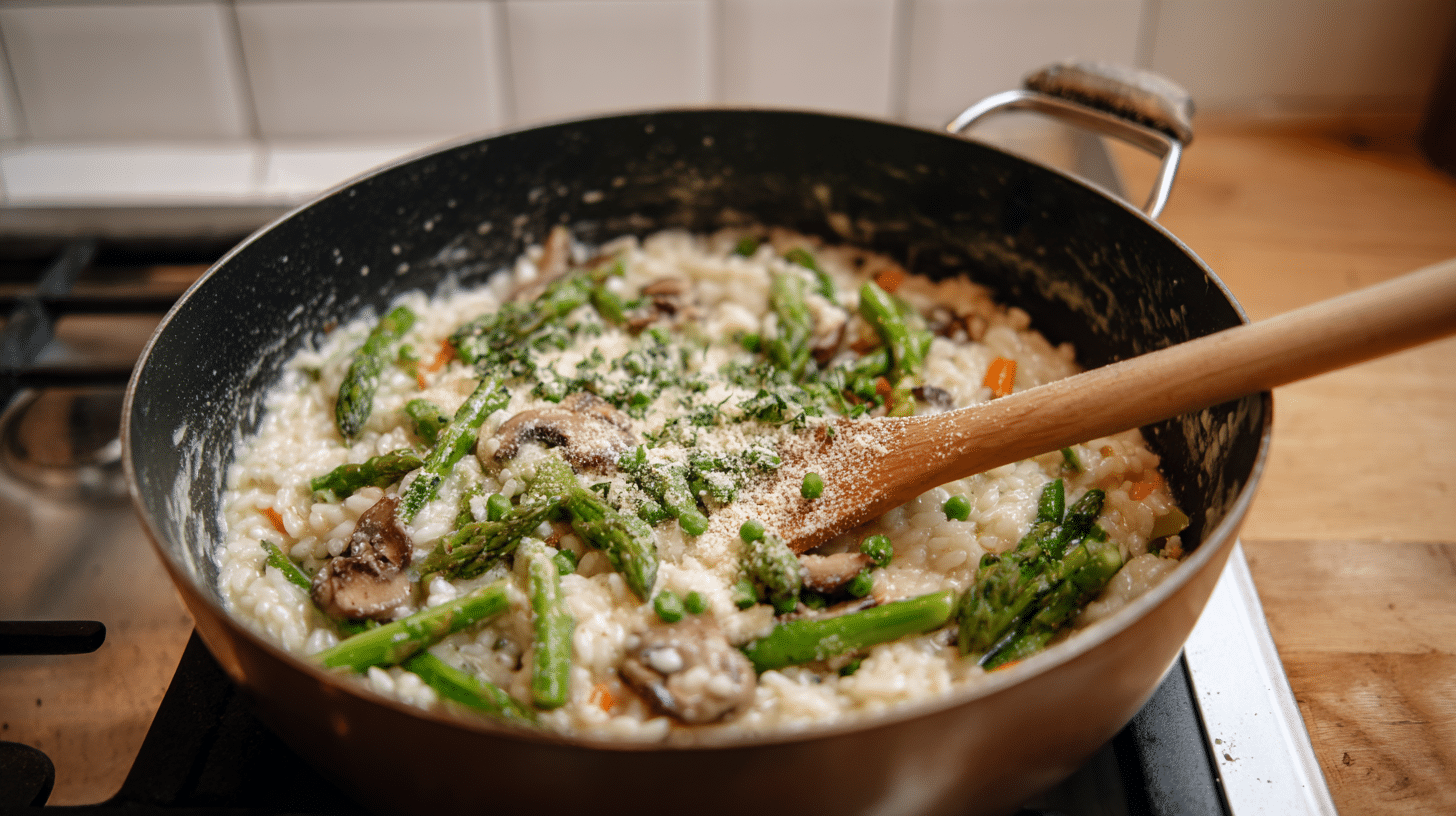
Once the rice is creamy and tender, remove it from the heat immediately. Stir in the nutritional yeast or cashew Parmesan, lemon juice, and fresh herbs.
Add coconut cream or vegan butter for extra richness if desired.
Pro Tip: Always finish risotto off the heat to prevent overcooking and maintain the perfect texture.
Step 6: Serve Hot
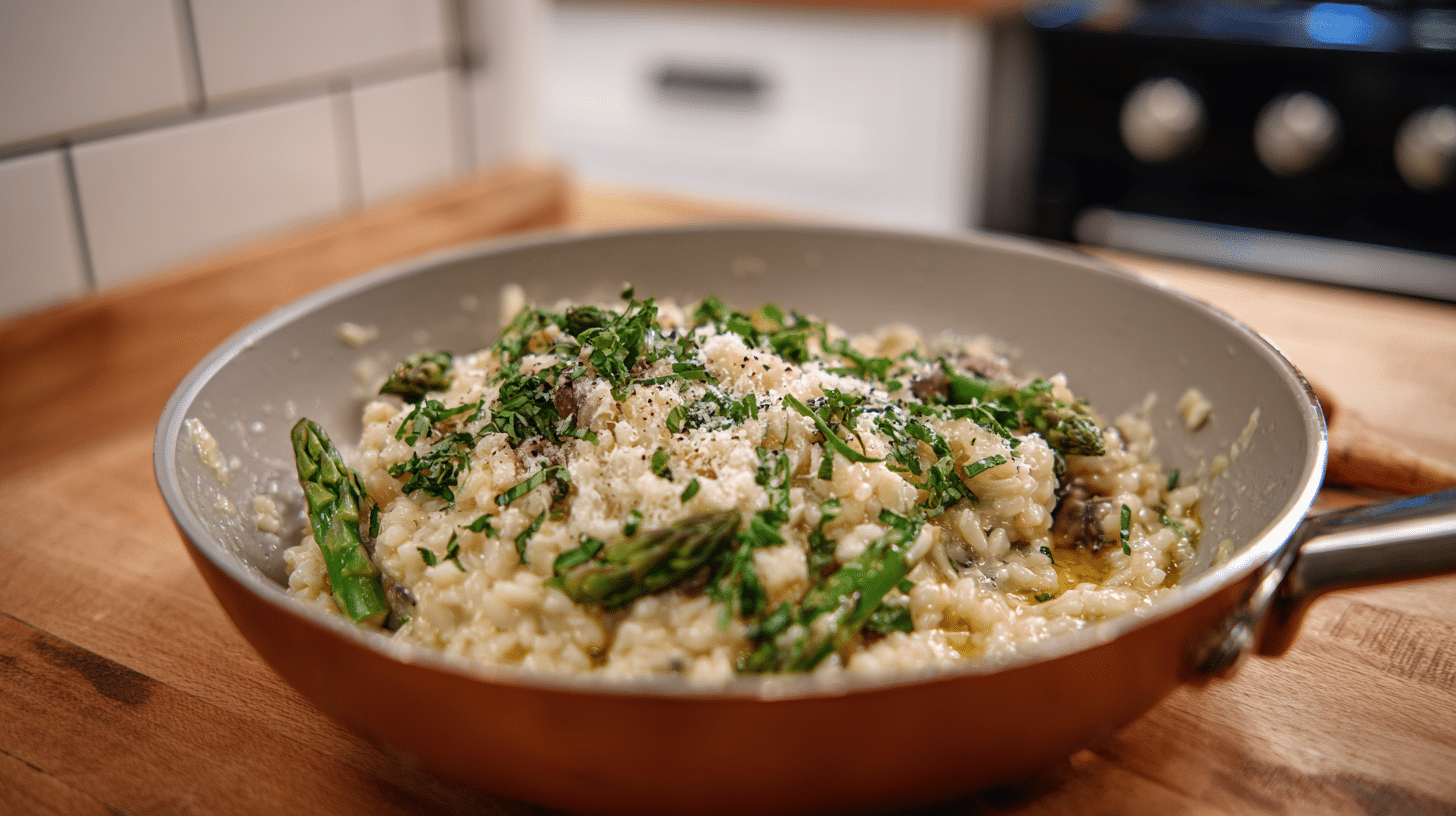
Season with salt and pepper to taste, then serve immediately.
Garnish with extra fresh herbs and a drizzle of olive oil for added flavor. Risotto waits for no one; it’s best enjoyed hot from the pan.
Pro Tip: Warm your serving bowls in the oven for 2-3 minutes to keep the risotto hot longer.
How to Serve This Dairy-Free Classic
Presentation and pairing can improve your risotto from a simple meal to a restaurant-quality experience. Here are the best ways to serve your creation.
- Traditional Style: Serve the risotto as a creamy side dish with a drizzle of olive oil and fresh herbs.
- Vegan Main Course: Add extra protein by topping with grilled tofu, chickpeas, or seared tempeh.
- With a Salad: Pair the risotto with a fresh salad for a light, balanced meal.
Storage & Make-Ahead Tips
While fresh risotto is always best, life happens, and leftovers are inevitable. Here’s how to handle storage and reheating like a pro.
While risotto is best enjoyed fresh, you can store leftovers for up to 3 days in the refrigerator. Reheat gently on the stovetop with a splash of broth to restore its creamy texture.
Is Risotto Gluten-Free and Dairy-Free?
These are two of the most common questions about risotto from people with dietary restrictions. Let’s clear up any confusion with straightforward answers.
Does Risotto Have Gluten?
Traditional risotto made with arborio rice is naturally gluten-free, making it a great option for those with gluten sensitivities or celiac disease.
However, be sure to check the labels of any added ingredients, as some store-bought versions may contain gluten.
Does Risotto Have Dairy?
Classic risotto recipes typically include dairy, especially butter and Parmesan cheese.
For a dairy-free risotto, simply replace these ingredients with olive oil, coconut cream, cashew Parmesan, or nutritional yeast. This version offers the same rich flavor and creamy texture without any dairy.
Nutrition Facts
Understanding the nutritional profile helps you see why dairy-free risotto makes a satisfying and balanced meal choice.
This dairy-free risotto provides a delicious, satisfying meal that’s both creamy and nutritious.
| Nutrition Information | Per Serving |
|---|---|
| Calories | 400 |
| Sugar | 3g |
| Sodium | 450mg |
| Fat | 15g |
| Carbs | 60g |
| Fiber | 6g |
| Protein | 7g |
Note: These values are approximate and may vary depending on specific ingredients used.
Fun Fact: Arborio rice contains more protein than regular long-grain rice, making it naturally more filling and nutritious!
Ways to Customize Your Dairy-Free Risotto
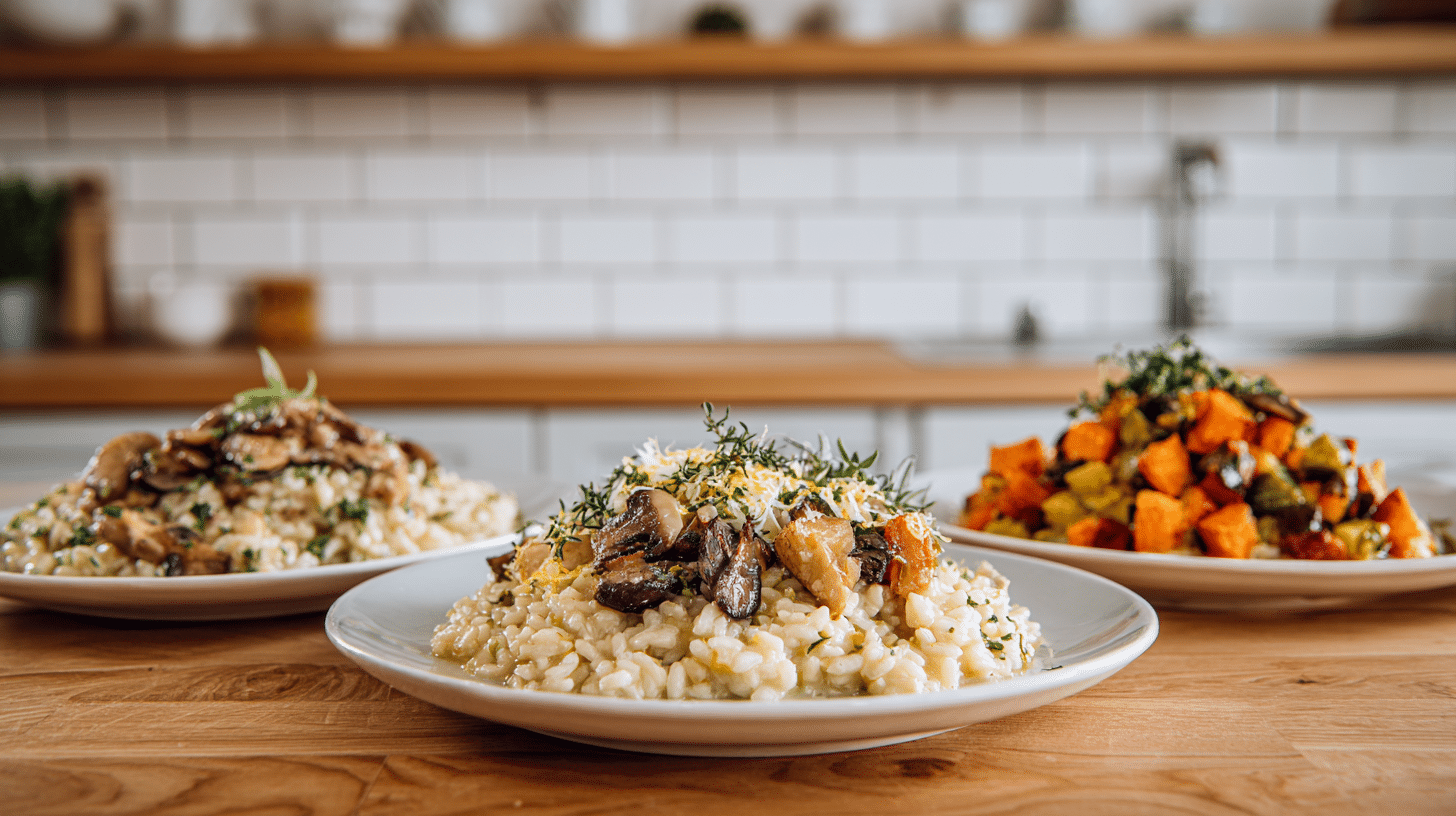
The beauty of risotto lies in its adaptability to seasons, preferences, and what’s in your fridge. These variations will inspire your creative combinations.
Once you’ve mastered the basics, here are some delicious variations you can try:
- Mushroom Risotto: Add extra earthy flavor with a variety of mushrooms, like cremini, shiitake, or portobello.
- Lemon & Herb Risotto: Add more brightness with extra lemon zest and fresh herbs like basil or thyme.
- Roasted Veggie Risotto: Top the risotto with roasted vegetables, like sweet potatoes, carrots, and squash, for added texture and flavor.
The best recipes become family favorites when you make them uniquely yours. Don’t be afraid to experiment and trust your taste buds.
Dairy-free risotto is a perfect base for customization. Swap in your favorite veggies, proteins, or flavorings to create a dish that suits your taste and dietary preferences.
Your Path to Dairy-Free Comfort Food Starts Here
The key to great dairy-free risotto isn’t what you leave out; it’s what you put in.
This recipe proves that plant-based ingredients can create the same rich, creamy texture you love in traditional risotto.
From the first spoonful to the last, every bite delivers comfort and satisfaction.
The versatility means you can make it your own with seasonal vegetables and personal touches. If you’re dairy-free by choice or necessity, this risotto doesn’t feel like a compromise.
It’s a celebration of how delicious plant-based cooking can be when done right. Each bowl brings together tradition and innovation in perfect harmony.
Grab your ladle and start stirring your way to creamy perfection tonight!








